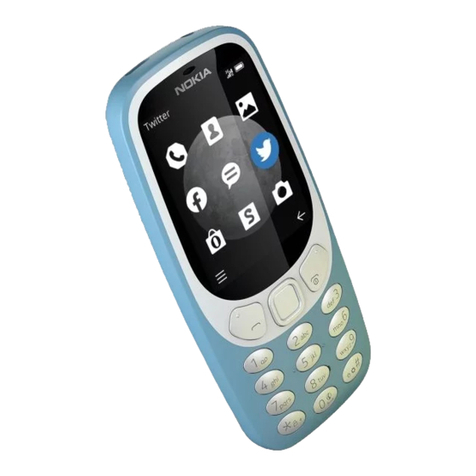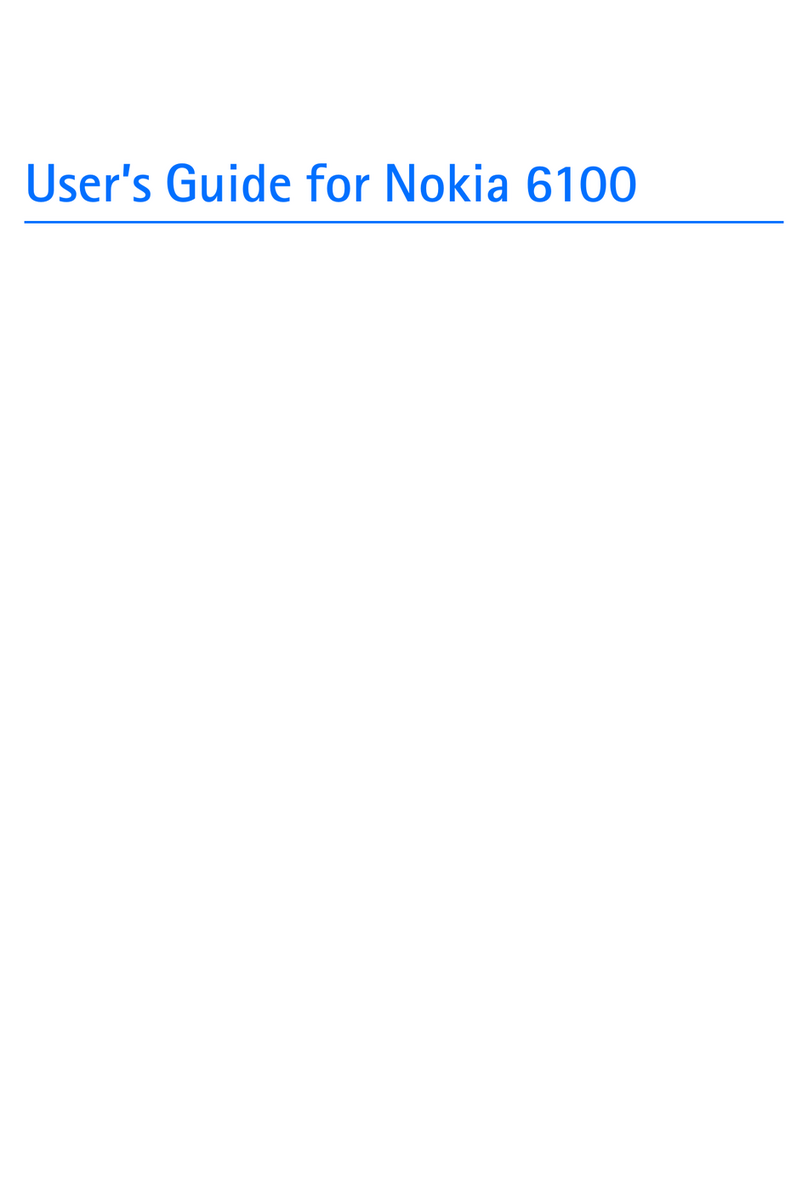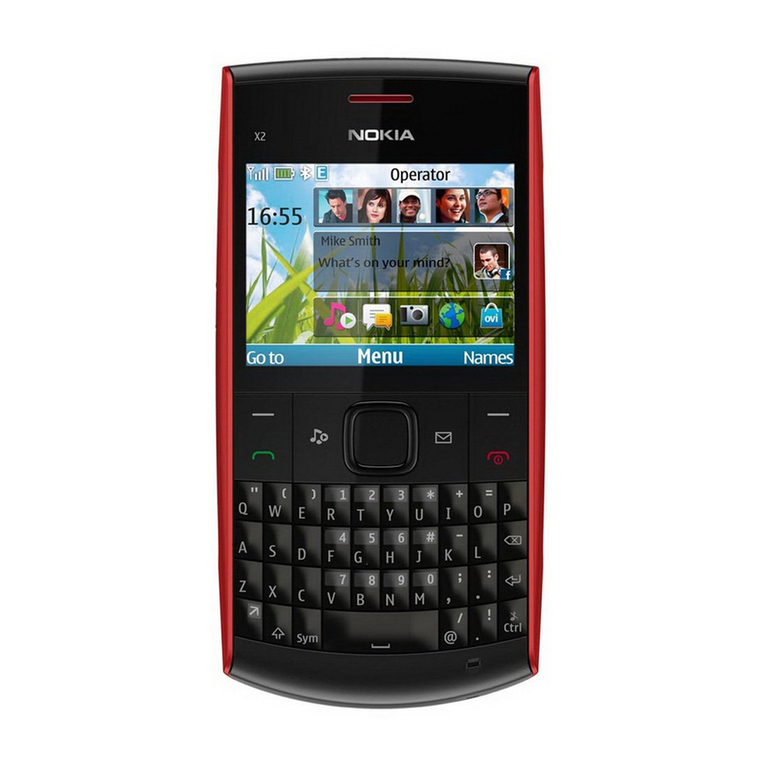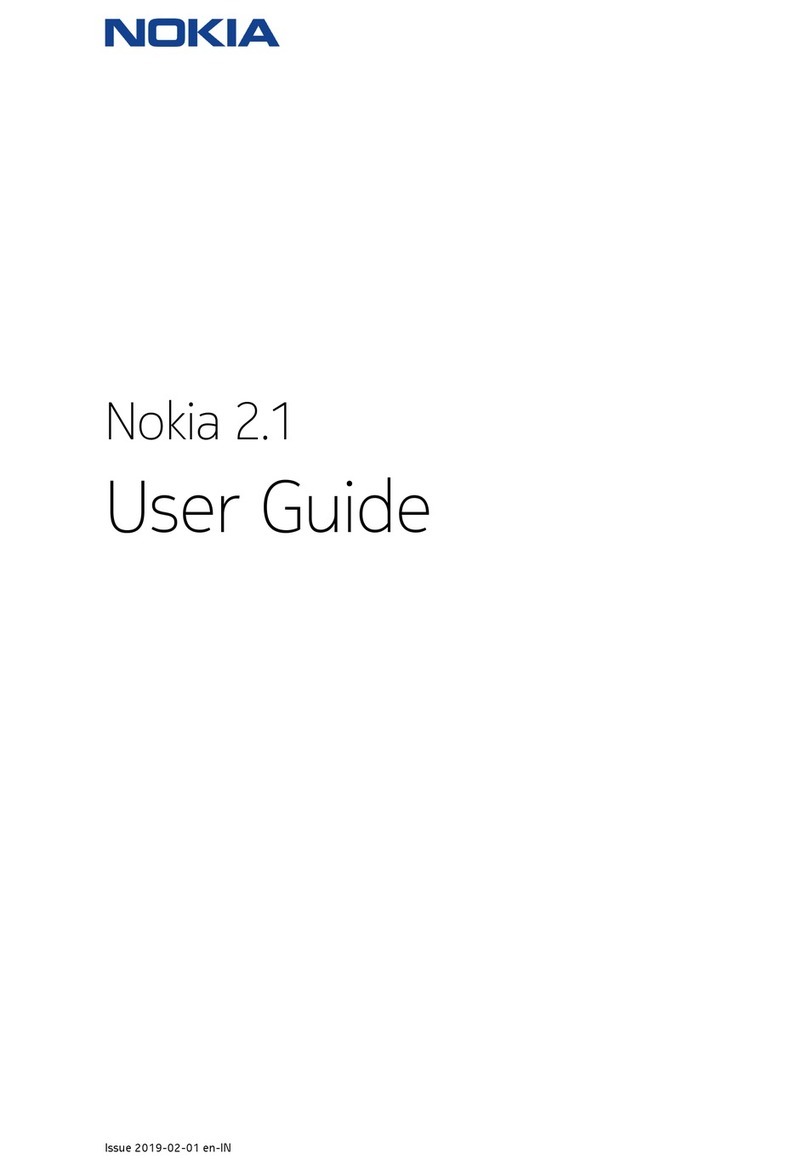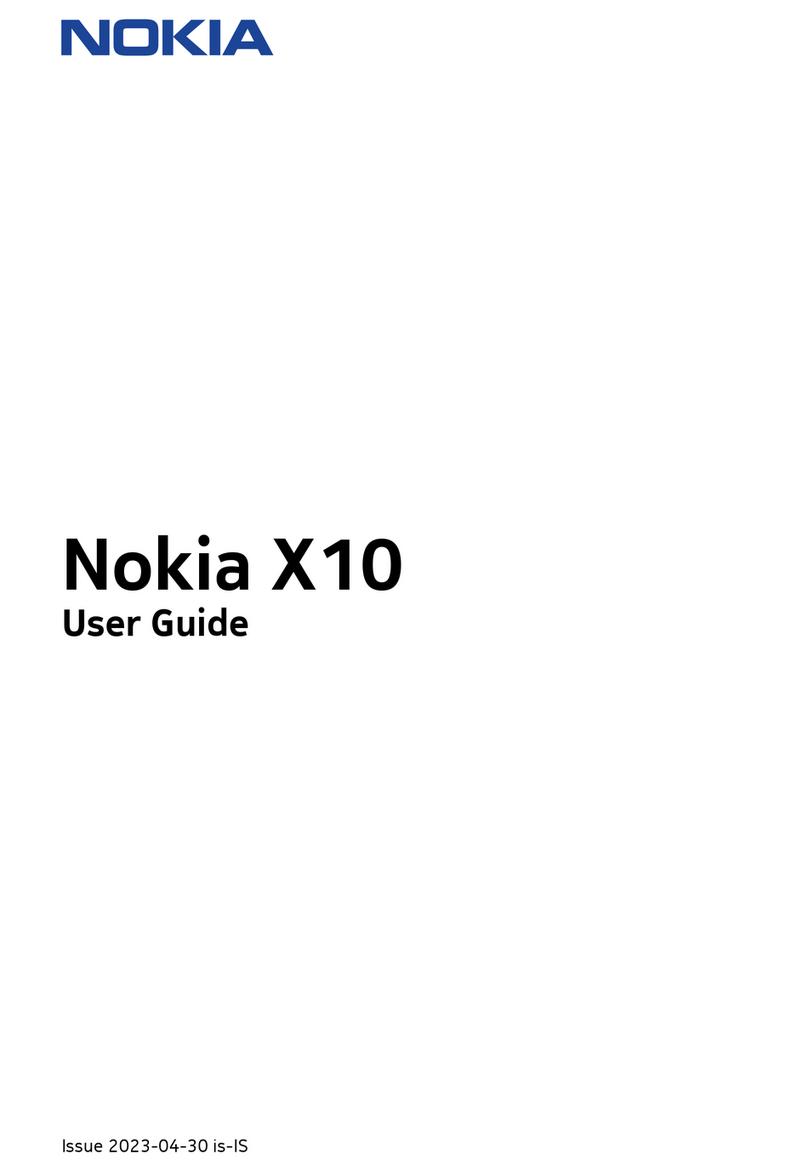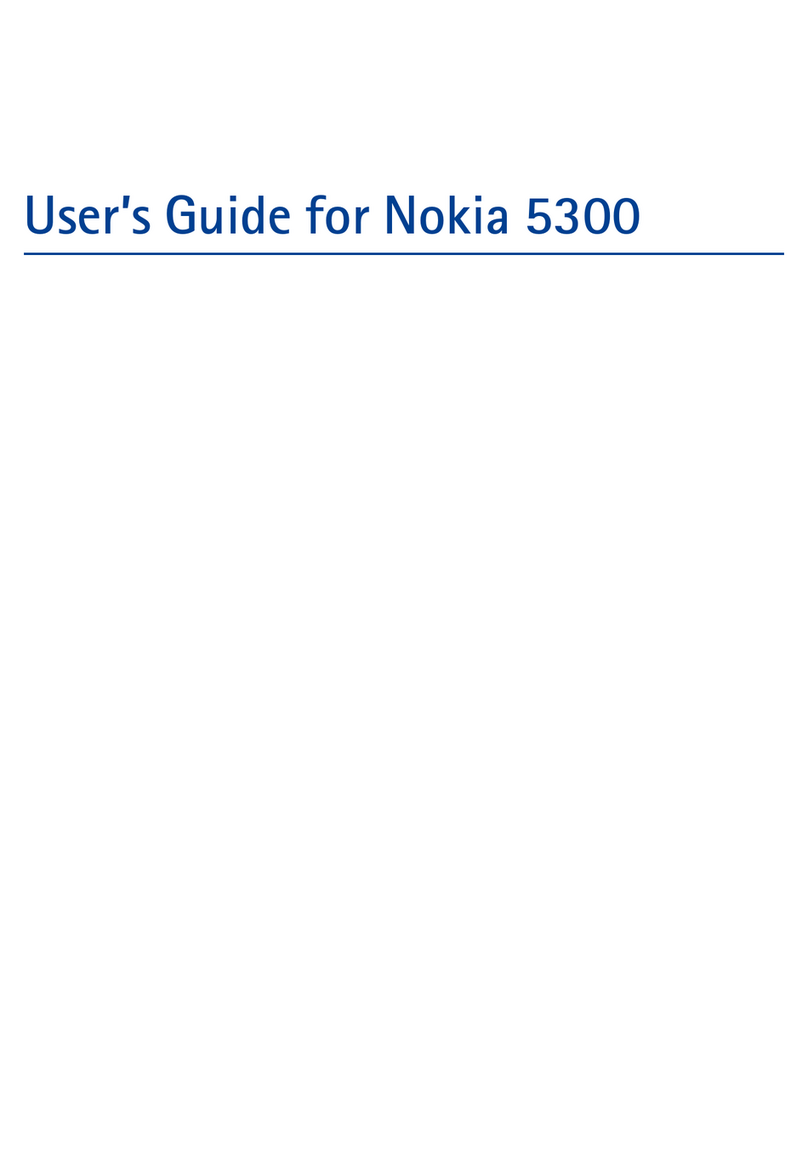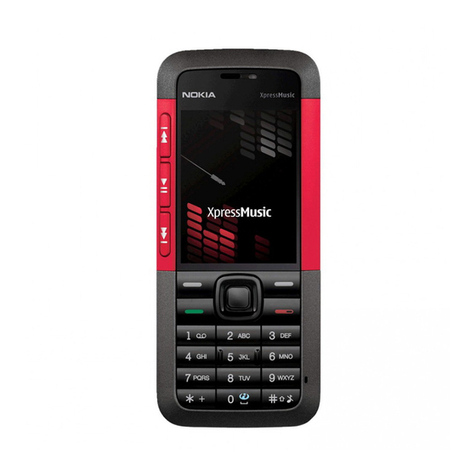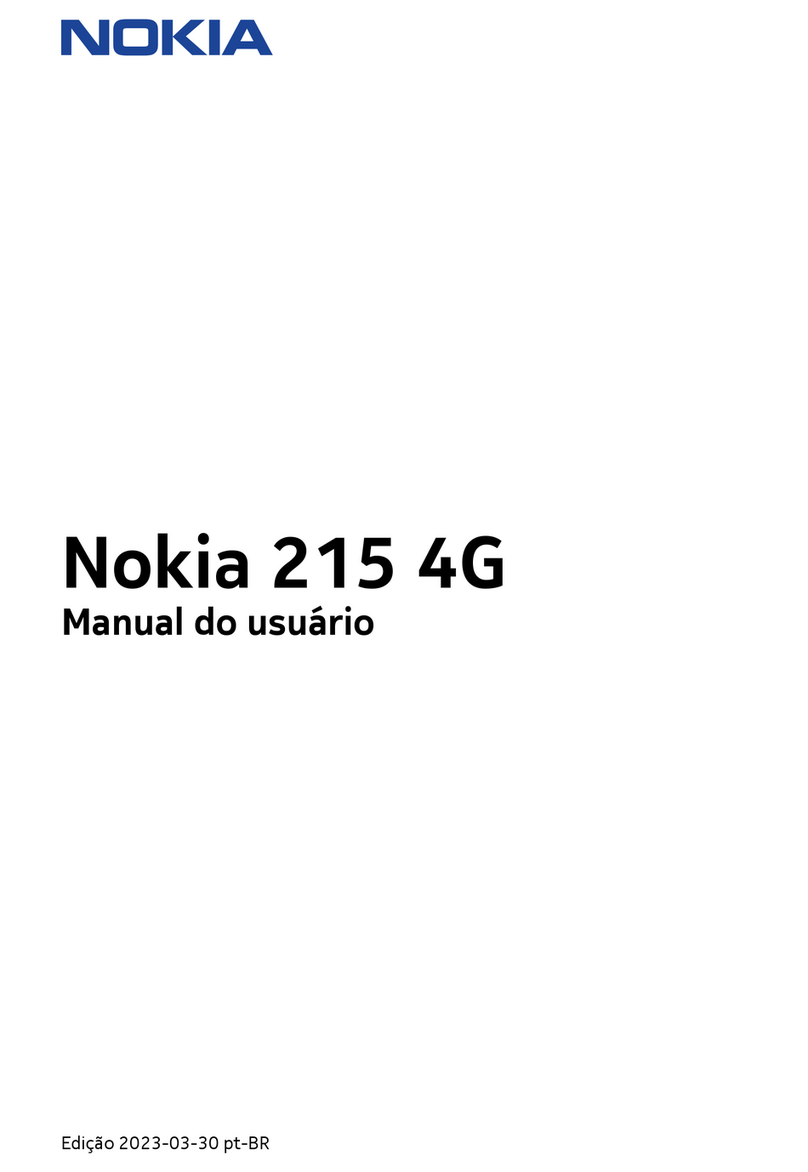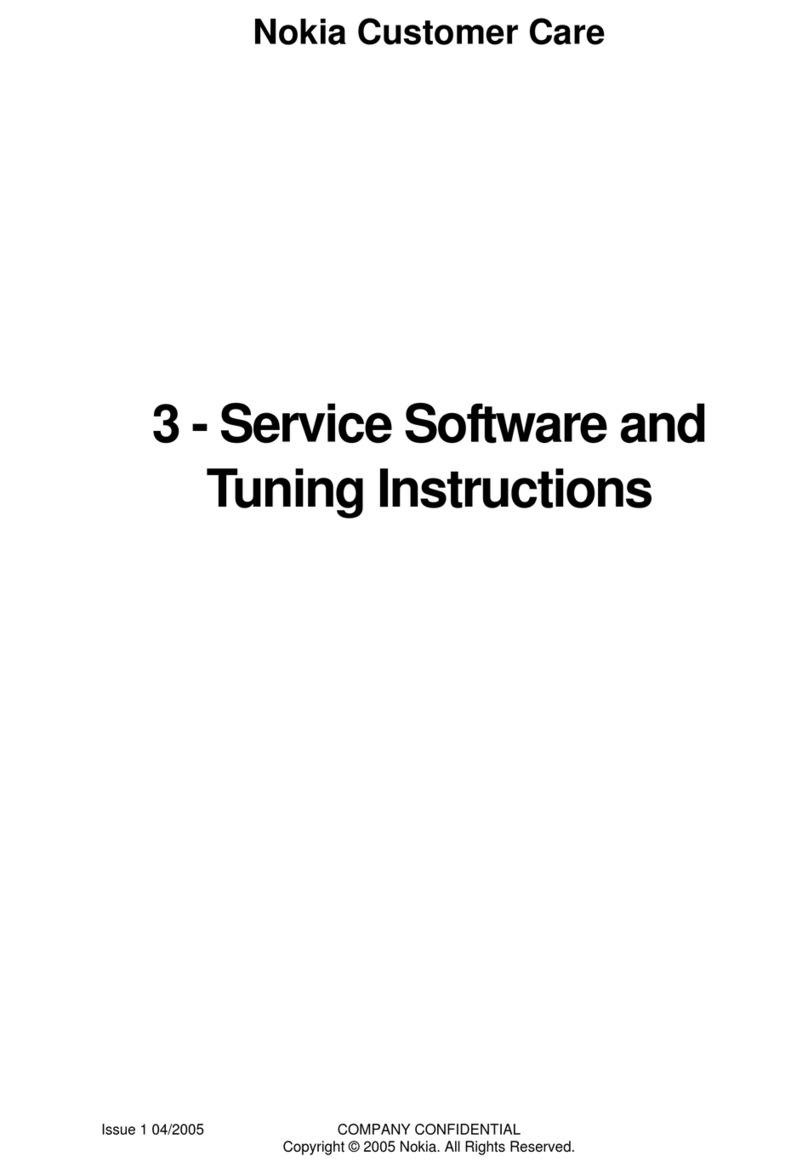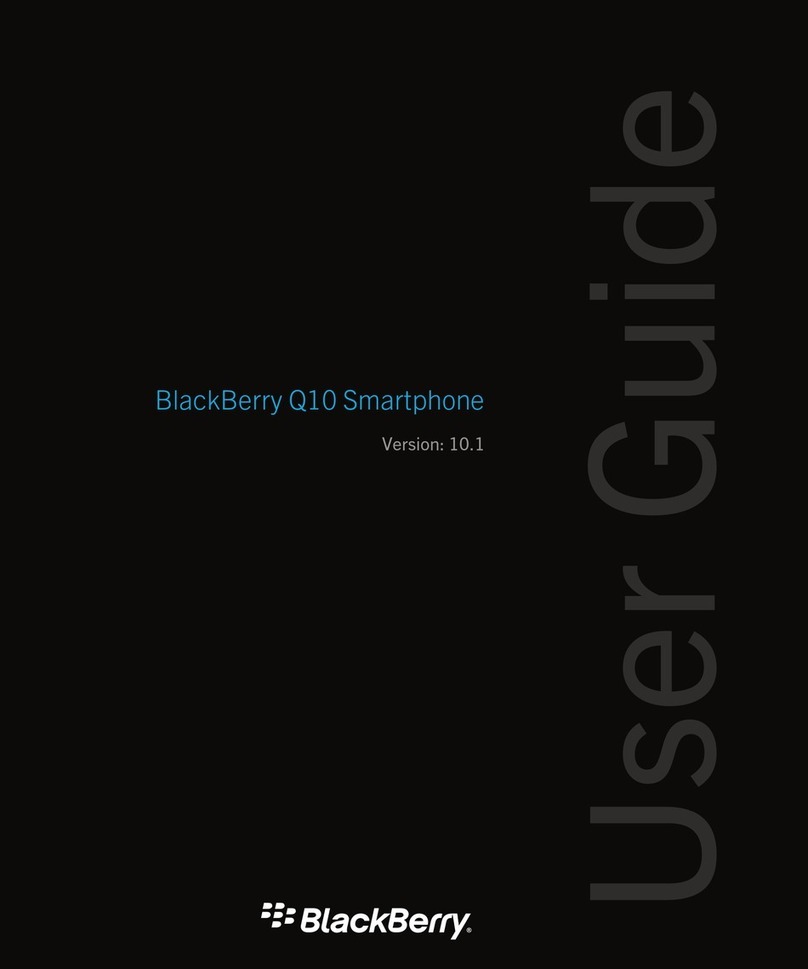
Content
4Copyright ©2004 Nokia. All rights reserved
Content
FOR YOUR SAFETY ................................... 6
General information.................................. 8
Stickers in the sales package .................................... 8
Access codes.................................................................. 8
Overview of the functions of the phone. 9
Bluetooth........................................................................ 9
GPRS (General Packet Radio Service) ..................... 9
HSCSD (High Speed Circuit
Switched Data).............................................................. 9
WAP (Wireless Application Protocol)...................... 9
Voice features.............................................................. 10
1.Your phone........................................... 11
Keys and connectors.................................................. 11
Standby mode.............................................................. 11
2.Getting started..................................... 13
Installing the SIM card and the battery .............. 13
Charging the battery ................................................. 13
Switching the phone on and off............................ 14
Keypad lock (Keyguard) ............................................ 15
3.Call functions....................................... 16
Making a call ............................................................... 16
Last number redialling........................................... 16
Calling your voice mailbox................................... 16
Speed dialling a phone number .......................... 16
Making a conference call ..................................... 16
Answering or rejecting an
incoming call ............................................................... 17
Call waiting .............................................................. 17
Options during a call................................................. 17
4.Writing text.......................................... 18
Using traditional text input..................................... 18
Using predictive text input...................................... 18
Setting predictive text input on or off ............. 18
Writing words with predictive text input ........ 18
5.Phone book (Names)............................ 20
Selecting the phone book settings........................ 20
Saving names and phone
numbers (Add name) ................................................. 20
Saving multiple numbers and text
items per name........................................................ 20
Searching for a name in the phone book ............ 21
Editing a name, number or a text item................ 21
Erasing names and numbers................................... 21
Copying phone books ............................................... 21
Sending and receiving a
business card............................................................... 22
Speed dialling ............................................................. 22
Voice dialling .............................................................. 22
Adding a voice tag................................................. 23
Making a call by using a voice tag ................... 23
Replaying, changing or erasing a voice tag.... 23
Service numbers......................................................... 23
Caller groups............................................................... 23
6.Using the menu.................................... 25
Accessing a menu function..................................... 25
By scrolling............................................................... 25
By shortcut............................................................... 25
7.Menu functions ................................... 26
Messages (Menu 1) ................................................... 26
Writing and sending messages........................... 26
Options for sending a message.......................... 26
Text and picture templates.................................. 27
Reading and replying to a message.................. 27
Inbox and outbox folders..................................... 28
Erasing the messages............................................ 28
Archive folder and My folders ............................ 28
Voice messages....................................................... 28
Info messages.......................................................... 28
Service command editor ...................................... 28
Message settings.................................................... 29
Call register (Menu 2)............................................... 29
Missed calls and received calls .......................... 29
Dialled numbers...................................................... 29
Erase recent call lists ............................................ 29
Call counters and call timers.............................. 30
Profiles (Menu 3) ....................................................... 30
Settings (Menu 4)...................................................... 30
Alarm clock .............................................................. 30
Time and date settings ......................................... 31
Call settings............................................................. 31
Phone settings......................................................... 32
Tone settings ........................................................... 33
Accessory settings.................................................. 33
GPRS modem settings........................................... 34
Security settings..................................................... 34
Restore factory settings ....................................... 34
Games (Menu 5)......................................................... 35





